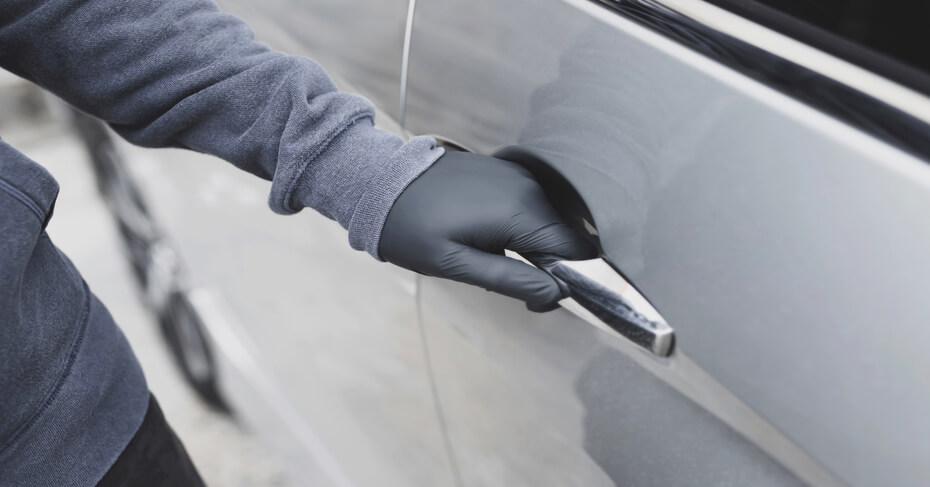
How to Lower Your Risk of Car Theft (Without Spending a Fortune)

by Maddi Butler
It’s not just luxury cars or brand-new models that get stolen. In fact, many of the most commonly stolen vehicles are everyday sedans and pickups — because they’re easier to flip or strip for parts. And while car theft rates vary by location, it only takes a few seconds of vulnerability to become a target.
The good news? You don’t need to install a top-of-the-line security system or park in a private garage to reduce your risk. Small changes in habits — and a few smart, low-cost tools — can make your car much harder to steal.
Here’s how to keep your vehicle safe without breaking the bank.
Don’t Make It Easy
Thieves often go for the path of least resistance. That means unlocked doors, visible valuables, and cars left running while the driver “just runs inside for a second.” Always lock your doors, roll up your windows, and take your keys with you — even if you’re stepping away briefly.
If your car has keyless entry or push-button start, be extra cautious. Thieves can use relay devices to capture your fob’s signal and unlock your vehicle, even from a short distance. Keep your keys in a signal-blocking pouch or metal container at home to prevent this kind of hack.
Park Smart
Where you park matters more than you might think. In public areas, aim for well-lit, high-traffic spots where thieves are less likely to operate unnoticed. If you have a choice between a quiet corner and a busy area near a store entrance or security camera, go for the latter.
At home, parking in a garage is ideal — but if that’s not an option, consider motion-sensor lights or a dash cam with parking mode. Even a basic camera can act as a strong deterrent when visible from outside the car.
Use a Visible Deterrent
Most modern cars come with factory alarms, but those are often easy for experienced thieves to bypass. Adding a simple, highly visible anti-theft device — like a steering wheel lock, brake pedal lock, or gear shift lock — can discourage someone from trying in the first place. These tools are inexpensive, easy to install, and serve as a strong visual signal that your car won’t be an easy target.
It’s also worth considering window etching (where your VIN is marked on the glass). This makes your car less appealing to parts thieves and is sometimes offered for free by local police or insurance programs.
Be Strategic About What You Leave Behind
Never leave valuables in plain sight. Even an empty backpack or phone mount can be enough to tempt a break-in. Keep your dashboard and seats clear, and store any essentials in the trunk or glove compartment — ideally before you reach your destination, not after you park.
If you drive a work vehicle or carry gear, invest in lockable storage or toolboxes inside the car. These can keep expensive equipment out of sight and harder to remove.
Consider a Low-Cost Tracker
You don’t need a full GPS subscription to keep tabs on your vehicle. Even a simple Bluetooth tracker (like an AirTag or Tile) hidden discreetly inside your car can help authorities locate it if it’s stolen. While not foolproof, it adds a layer of visibility that most thieves aren’t expecting — and in many cases, that’s enough to make them move on.
For added protection, pair a tracker with a vehicle kill switch or fuel pump cut-off. These require minimal wiring but can prevent a thief from driving away even if they manage to get in.
Check with Your Insurance Provider
Some insurance companies offer discounts for anti-theft devices or may help cover the cost of installing one. It’s worth asking your agent what qualifies — even a steering wheel lock might earn you a small break on your premium.
On the flip side, if you’ve recently moved to a higher-risk area or your car has become a popular target in theft reports, it might be time to reevaluate your coverage. Comprehensive insurance is what protects against theft — and if you’ve only got liability, you could be left footing the bill if your car disappears.
The Bottom Line
Car theft isn’t just a big-city problem — and you don’t need to spend thousands to make your vehicle more secure. A few intentional choices, some simple tools, and a shift in habits can go a long way toward protecting your ride.
And while you’re thinking about protection, it’s a good time to review your insurance policy. If you’ve taken extra steps to secure your car, you might be eligible for new discounts — and if you’re not fully covered for theft, now’s the moment to make sure you are. A quick quote check could give you peace of mind and a little more room in your budget.